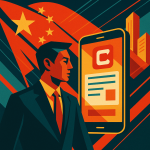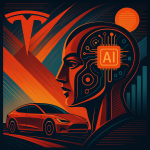Key Points
- China’s Proposal: China officially proposed the establishment of a World Artificial Intelligence Organization on July 26, 2025, with Shanghai considered as its potential headquarters, aiming to lead global AI governance.
- “Global AI Governance Action Plan”: Alongside the organization proposal, the 2025 World Artificial Intelligence Conference (WAIC) released a comprehensive 13-point blueprint for an integrated AI future, emphasizing open-source collaboration and sustainable AI.
- Focus on Global South & Infrastructure: A significant part of the plan includes accelerating the build-out of digital infrastructure worldwide, specifically supporting countries in the Global South to bridge the “digital and intelligence divide.”
- Standards & Open-Source: The plan emphasizes creating global standards for AI safety, industry, and ethics, and fostering a diverse, open-source innovation ecosystem to democratize AI development.
- Sustainable AI & Security: China is advocating for “sustainable AI” by formulating energy efficiency standards and promoting green tech, while also addressing security with a focus on risk testing and a traceability management system for AI services.

China is making a major play for the future of global AI governance, proposing the establishment of a World Artificial Intelligence Organization, with Shanghai being considered for its headquarters.
This move signals more than just a new international committee.
It’s a clear statement of intent from Beijing to take a leading role in shaping the rules, standards, and ethical frameworks for the world’s most transformative technology.
The proposal is framed as a commitment to multilateralism and a direct response to calls from the Global South, aiming to close the “digital and intelligence divide” and ensure AI development is both beneficial and inclusive for all nations.

Resume Captain
Your AI Career Toolkit:
- AI Resume Optimization
- Custom Cover Letters
- LinkedIn Profile Boost
- Interview Question Prep
- Salary Negotiation Agent

The Fine Print: Inside the “Global AI Governance Action Plan”
Alongside the proposal for a new world organization, the 2025 World Artificial Intelligence Conference (WAIC) released a comprehensive “Global AI Governance Action Plan.”
This isn’t just fluffy corporate-speak.
It’s a detailed, 13-point blueprint that outlines a vision for a globally integrated AI future, emphasizing everything from open-source collaboration to sustainable AI.
Let’s break down the key pillars of the plan.
- Emphasis on multilateralism and inclusive global AI governance.
- Strong focus on supporting Global South countries to bridge digital divides.
- Promotion of open-source AI development and international cooperation.
- Commitment to establishing global standards for AI safety, ethics, and industry.
- Advocacy for “sustainable AI” through energy efficiency and green tech.
- Development of robust AI security and traceability management systems.
- Alignment with UN initiatives, such as the “Global Digital Compact.”
- Call for a multi-stakeholder governance model involving governments, companies, academia, and civil society.
1. Seizing AI Opportunities Together
This is a global call to action for governments, companies, research labs, and individuals to get on board.
- Accelerate the build-out of digital infrastructure worldwide.
- Jointly explore cutting-edge AI innovations.
- Promote the widespread adoption of AI to tackle global challenges and meet the UN 2030 Agenda for Sustainable Development.
2. Fueling AI Innovation & Development
The plan pushes for an open and experimental environment to supercharge AI progress.
- Establish international science and tech cooperation platforms.
- Foster an innovation-friendly policy environment with less red tape.
- Reduce or eliminate technological barriers to promote continuous breakthroughs and “AI+” application scenarios.
3. Pushing “AI+” Across Every Industry
The goal is to deeply embed AI into the real economy.
- Empower key sectors like manufacturing, healthcare, education, and agriculture.
- Drive deep applications in areas like autonomous driving and smart cities.
- Build a rich, diverse, and benevolent AI application ecosystem through cross-national cooperation and sharing of best practices.
4. Building Out Digital Infrastructure (Especially for the Global South)
A huge emphasis is placed on building the foundational layers for a global AI network.
- Accelerate the construction of global clean energy, next-gen networks, and intelligent computing power.
- Improve the layout of interoperable AI and digital infrastructure so systems can communicate seamlessly.
- Crucially, support countries in the Global South in developing AI tech tailored to their needs, ensuring they can truly access and apply AI.
5. Fostering a Diverse and Open-Source Innovation Ecosystem
The plan advocates for leveraging open-source to democratize AI development.
- Build transnational open-source communities and secure platforms.
- Promote sharing of basic resources to lower the barrier to entry for innovators.
- Create open-source compliance systems and security guidelines to ensure a safe and interoperable ecosystem.
6. Promoting High-Quality Data Supply
High-quality data is the lifeblood of AI, and the plan aims to make it more accessible.
- Promote the lawful and orderly free flow of data across borders.
- Explore mechanisms for global data sharing to build high-quality, diverse datasets.
- At the same Pars time, safeguard personal privacy and data security, while working to eliminate discrimination and bias in AI models.
7. Tackling “Sustainable AI”: Energy and Environment
Recognizing AI’s massive resource footprint, the plan calls for a green approach.
- Advocate for the concept of “sustainable AI,” prioritizing resource conservation.
- Jointly formulate AI energy and water efficiency standards.
- Promote green tech like low-power chips and efficient algorithms.
- Use AI to help solve climate change and protect biodiversity.
8. Creating Global Standards and Norms
This is a critical point: whoever writes the standards often wins the market.
- Leverage international bodies like the ITU, ISO, and IEC to create a scientific and inclusive regulatory framework.
- Accelerate the creation of technical standards for safety, industry, and ethics.
- Work to eliminate algorithmic bias and ensure standard systems are inclusive and interoperable globally.
9. Public Sector to Lead by Example
Governments are urged to be the first movers in deploying and governing AI.
- Prioritize deploying reliable AI in public services like healthcare, education, and transportation.
- Conduct regular safety assessments of these systems.
- Strictly adhere to data privacy and intellectual property protections.
10. Getting Serious About AI Security Governance
With great power comes great risk, and the plan addresses security head-on.
- Conduct AI risk assessments to build a widely agreed-upon security framework.
- Establish risk testing and evaluation systems.
- Promote threat information sharing and emergency response mechanisms.
- Explore a traceability management system for AI services to prevent misuse and abuse.
11. Implementing the UN’s “Global Digital Compact”
The plan aligns with broader United Nations initiatives, positioning China as a key player in global digital diplomacy.
- Use the UN as the primary channel to help developing countries bridge the digital divide.
- Promote an inclusive and equitable multilateral global digital governance system.
- Support the creation of an International AI Scientific Panel and a Global AI Governance Dialogue within the UN framework.
12. Boosting AI Capacity Building, Worldwide
The vision is to uplift the entire world’s AI capabilities, not just a few nations.
- Encourage leading AI countries to support developing nations through practical actions.
- This includes cooperation on infrastructure, joint labs, education and training, and developing high-quality datasets.
- Focus on enhancing public AI literacy, especially for women and children.
13. Building a Multi-Stakeholder Governance Model
This isn’t a top-down, government-only approach. The plan calls for an inclusive model.
- Establish governance platforms with active participation from companies, academia, and civil society.
- Encourage dialogue between AI enterprises from different countries to share practices on ethics, safety, and innovation.
- Leverage think tanks and forums to ensure continuous communication among researchers, developers, and policymakers.

The Bottom Line for Tech, Founders, and Investors
This is far more than a bureaucratic announcement.
It’s a strategic roadmap that reveals China’s long-term ambitions in the global tech landscape.
A New Power Center: China is vying to become a central hub for global AI rulemaking, potentially creating a counterweight to Western-led initiatives.
The “Global South” is Key: The repeated emphasis on developing nations is a clear geopolitical strategy to build alliances and create a large, non-Western bloc for AI standards and development.
Standards Are the Prize: The push for unified standards in safety, ethics, and technology is significant. The entities that define these standards will wield immense influence over the future of the industry.
This proposal for a World Artificial Intelligence Organization is a bold declaration of intent from one of the world’s AI superpowers, signaling a new chapter in the race for global technology governance.

Find Top Talent on China's Leading Networks
- Post Across China's Job Sites from $299 / role, or
- Hire Our Recruiting Pros from $799 / role
- Qualified Candidate Bundles
- Lower Hiring Costs by 80%+
- Expert Team Since 2014
Your First Job Post





